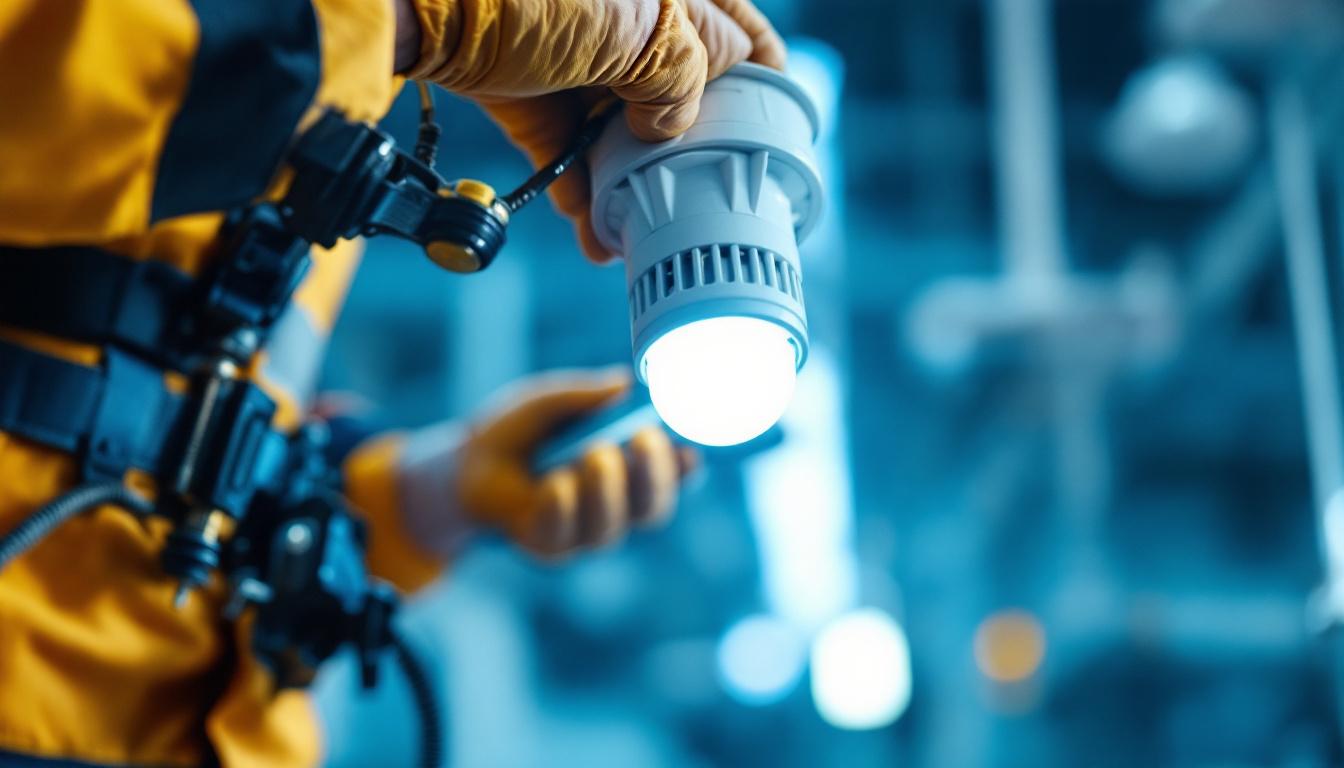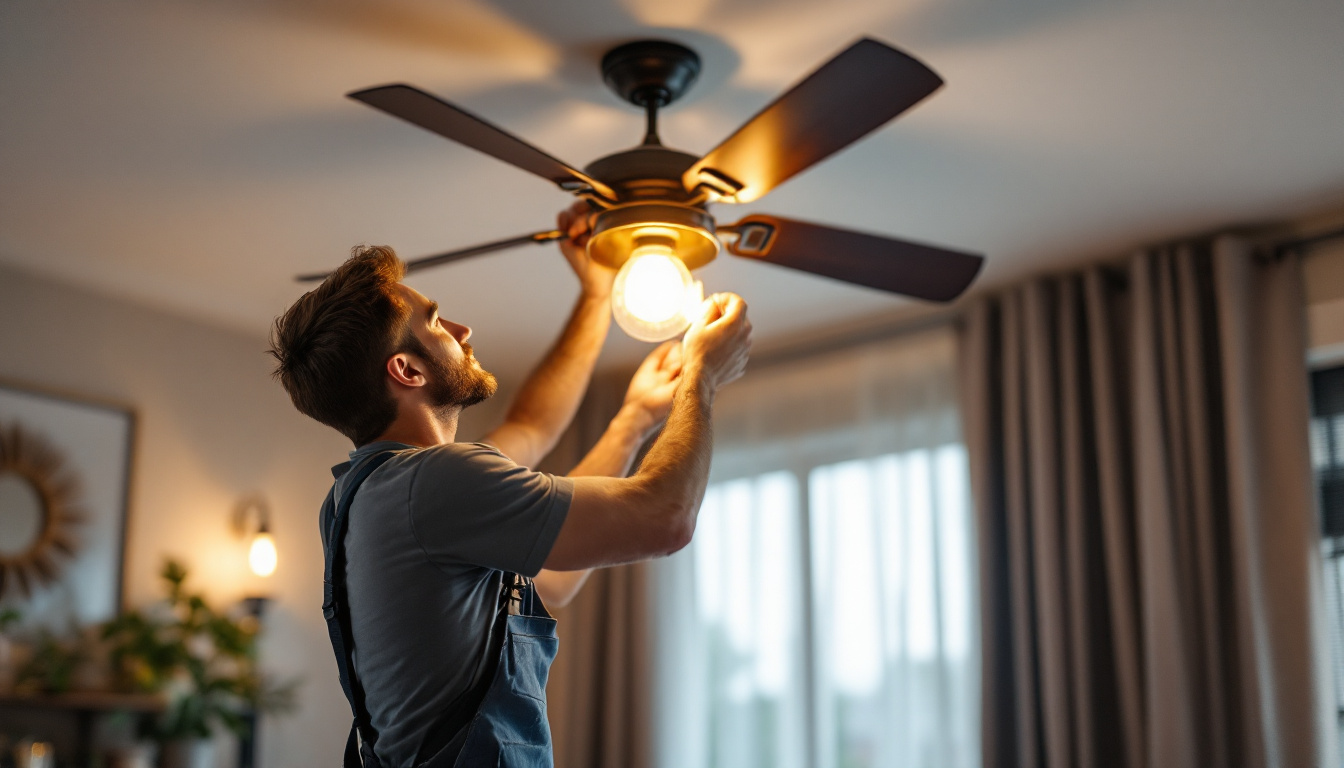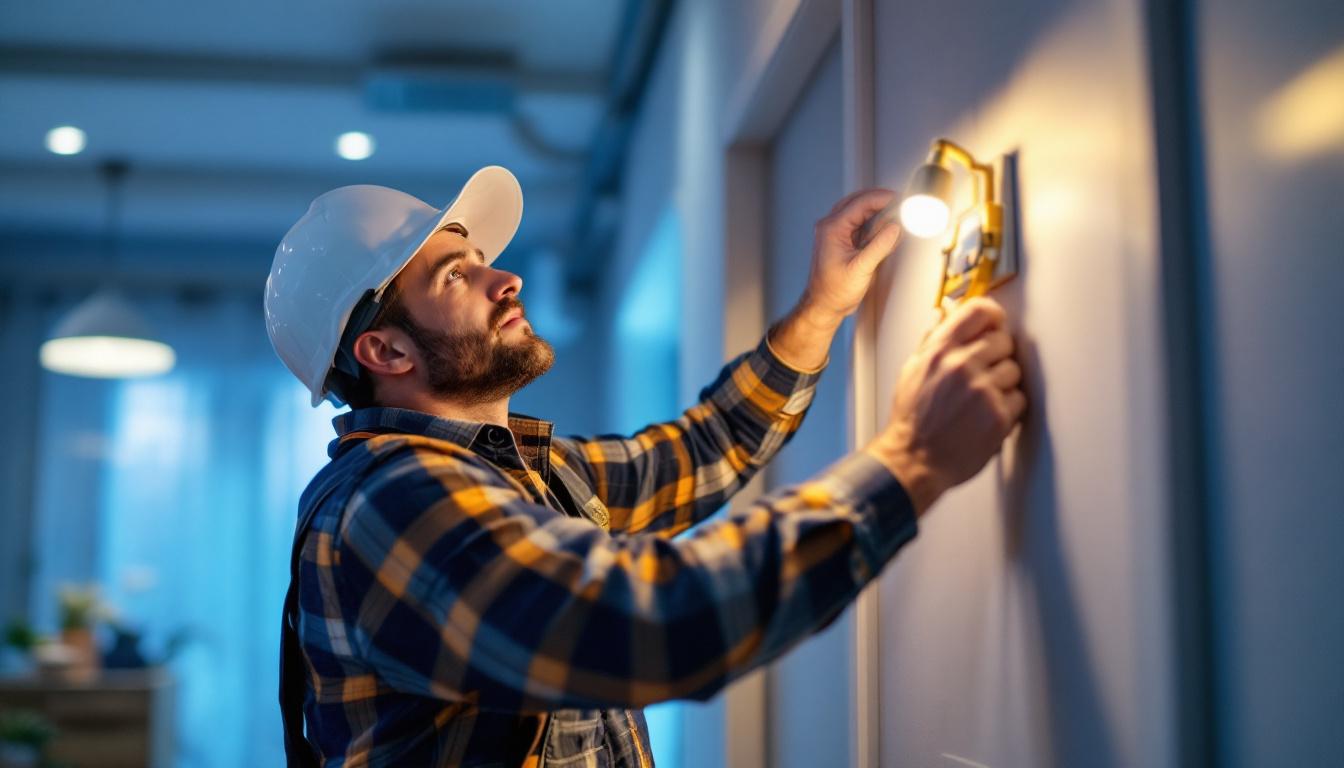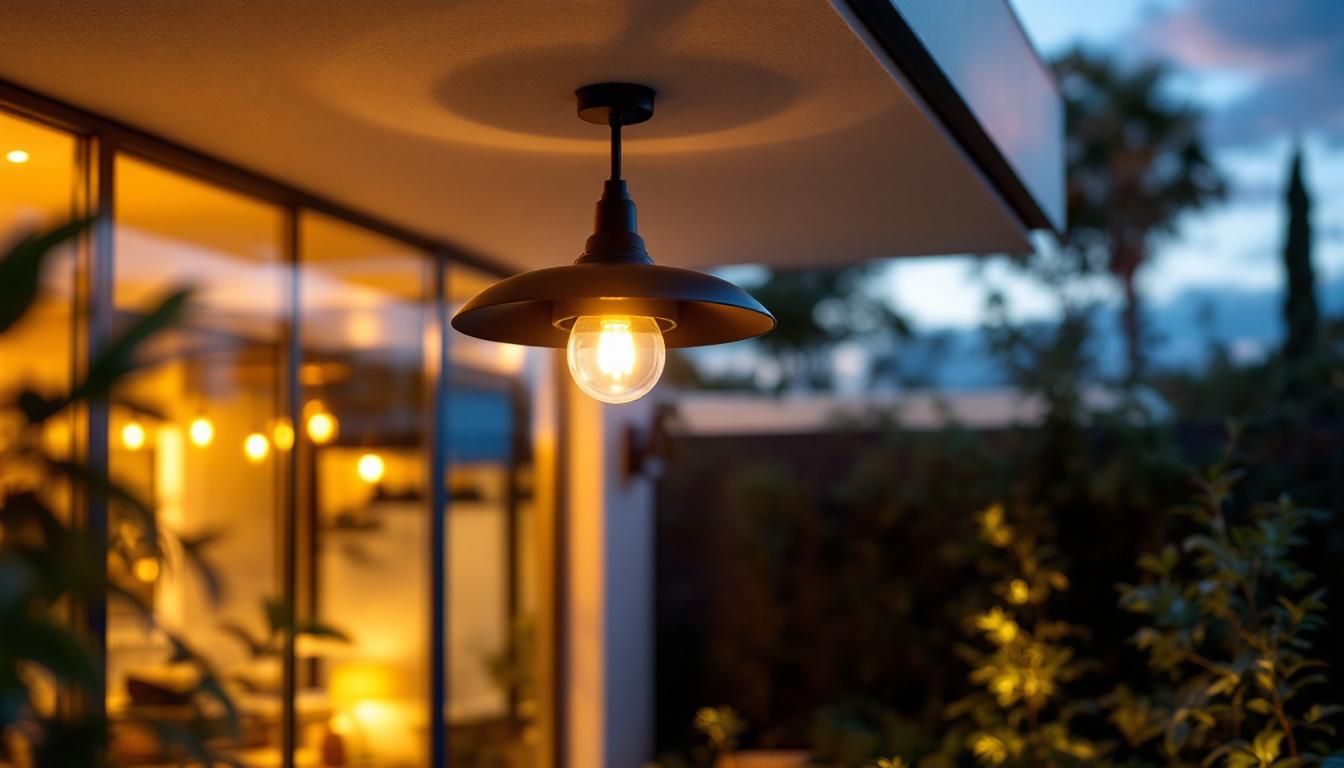
Fluorescent tube lighting remains a popular choice for both commercial and residential applications, offering energy efficiency and a broad spectrum of light. For lighting contractors, understanding the intricacies of fluorescent tube light sockets is essential for ensuring optimal performance and longevity. This article delves into best practices, installation techniques, and troubleshooting tips specifically tailored for lighting professionals.
Fluorescent tube light sockets, also known as lampholders, play a crucial role in the functionality of fluorescent lighting systems. These sockets are designed to securely hold the fluorescent tubes in place while providing the necessary electrical connections. Understanding the various types of sockets available and their specific applications is vital for lighting contractors.
There are primarily two types of fluorescent tube light sockets: bi-pin and single-pin. Bi-pin sockets are the most common, featuring two pins on each end of the tube that fit into the socket. These are typically used in T8 and T12 fluorescent tubes. On the other hand, single-pin sockets are designed for specific applications, such as high-output or specialized lighting fixtures. These sockets often cater to environments that require high-intensity lighting, such as industrial settings or large retail spaces, where the quality of illumination can significantly impact visibility and aesthetics.
Additionally, it’s important to recognize that sockets can vary in terms of material and design. Some are made from durable thermoplastic, while others may incorporate metal components for enhanced stability and heat resistance. Understanding these differences can help contractors choose the right socket for each application. For instance, sockets made from thermoplastic materials are often lighter and more resistant to corrosion, making them suitable for humid environments, while metal sockets provide greater durability in high-traffic areas where wear and tear are more likely.
When selecting fluorescent tube light sockets, compatibility with the tube type and fixture is paramount. Each socket type has specific voltage ratings and wattage limits, which must be adhered to in order to prevent overheating or electrical failures. Always refer to manufacturer specifications to ensure that the selected socket aligns with the requirements of the fluorescent tube being used. This attention to detail not only ensures safety but also maximizes the lifespan of the lighting system, reducing the frequency of replacements and maintenance.
Moreover, the physical dimensions of the socket must match the fixture design. A mismatched socket can lead to improper installation, which may compromise the lighting system’s efficiency and safety. Therefore, it is advisable to keep a variety of socket types and sizes in stock to accommodate different project needs. Furthermore, some advanced fluorescent lighting systems now incorporate features such as quick-connect terminals, which simplify the installation process and enhance the overall user experience. These innovations reflect the ongoing evolution in lighting technology, emphasizing the importance of staying informed about the latest developments in socket design and functionality.
Proper installation of fluorescent tube light sockets is critical for ensuring the safety and efficiency of the lighting system. Following best practices not only enhances performance but also minimizes the risk of future issues.
Before beginning any installation, it is essential to turn off the power supply to the fixture. This step cannot be overstated, as working with live electrical components poses significant safety risks. Use a voltage tester to confirm that the power is indeed off before proceeding.
Additionally, wearing appropriate personal protective equipment (PPE) such as gloves and safety glasses is recommended. This helps protect against accidental cuts from broken tubes or electrical shocks during the installation process. It’s also wise to ensure that the workspace is clear of any clutter or obstacles that might cause accidents while you’re working.
1. **Remove the Old Socket**: Begin by carefully removing the old socket from the fixture. This often involves unscrewing or unclipping it from the mounting bracket. Ensure that all electrical connections are properly disconnected.
2. **Install the New Socket**: Position the new socket in place, making sure it aligns with the mounting holes. Secure it using screws or clips as required. Ensure that the socket is firmly attached to prevent any movement that could lead to electrical issues. It is also beneficial to check the compatibility of the new socket with the existing fixture to avoid any mismatches that could compromise functionality.
3. **Make Electrical Connections**: Connect the wiring according to the manufacturer’s instructions. Typically, this involves connecting the black (hot) wire to the socket and the white (neutral) wire to the corresponding terminal. Double-check all connections to ensure they are tight and secure. In some cases, it may be necessary to use wire nuts or electrical tape to ensure that exposed wires are properly insulated and protected from short circuits.
4. **Test the Installation**: Once everything is connected, restore power to the fixture and test the installation by inserting a fluorescent tube. Observe for any flickering or irregularities in lighting, which may indicate a connection issue. If the light does not illuminate as expected, it may be prudent to turn the power off again and recheck all connections for any loose wires or improper fittings.
5. **Final Adjustments and Maintenance**: After confirming that the installation is successful, consider making any final adjustments to the fixture’s positioning to ensure optimal lighting coverage in the intended area. Regular maintenance checks, such as cleaning the fixtures and replacing tubes as needed, can significantly prolong the life of your fluorescent lighting system. Keeping the area around the fixture free of dust and debris not only helps maintain brightness but also reduces the risk of overheating and potential hazards.
Regular maintenance of fluorescent tube light sockets is essential for prolonging their lifespan and ensuring optimal performance. Lighting contractors should be familiar with common issues that may arise and how to address them effectively.
One of the most common issues is flickering lights, which can be caused by a loose connection within the socket or a failing tube. If flickering occurs, it is advisable to first check the tube for any signs of damage before inspecting the socket connections. In some cases, flickering may also be attributed to voltage fluctuations in the electrical supply, which can be mitigated by ensuring that the circuit is not overloaded and that the wiring is in good condition.
Another frequent problem is socket corrosion, which can happen over time due to moisture exposure. Corroded sockets can lead to poor electrical contact and ultimately affect the performance of the lighting system. In such cases, replacing the affected socket is often the best solution. Additionally, applying a protective coating or sealant to the sockets can help prevent moisture ingress, especially in environments prone to humidity or condensation, such as kitchens and bathrooms.
Routine inspections of fluorescent tube light sockets should be part of any maintenance schedule. Look for signs of wear, corrosion, or damage, and replace any compromised components promptly. Regular testing of the electrical connections can also help identify potential issues before they escalate. It is important to ensure that all fixtures are securely mounted and that there are no loose wires that could lead to short circuits or electrical hazards.
Using a multimeter, contractors can check the continuity of the socket connections and ensure that they are functioning correctly. This proactive approach can save time and resources in the long run by preventing unexpected failures. Furthermore, documenting the inspection results and any maintenance performed can provide valuable insights for future troubleshooting and help maintain a comprehensive history of the lighting system’s performance. Keeping a log of replacement parts and their installation dates can also assist in planning for future maintenance needs, ensuring that all components are operating at their best.
As energy efficiency continues to be a priority in the lighting industry, understanding how fluorescent tube light sockets contribute to overall energy use is essential for contractors. By implementing energy-efficient practices, contractors can not only reduce operational costs but also enhance client satisfaction.
When selecting fluorescent tube light sockets, consider options that are designed for energy efficiency. Some sockets are specifically engineered to minimize energy loss, which can contribute to lower electricity bills over time.
Additionally, pairing high-efficiency fluorescent tubes with compatible sockets can maximize the energy savings. For example, using T5 tubes instead of T8 or T12 can significantly reduce energy consumption while providing the same or better light output.
Lighting contractors play a crucial role in educating clients about the benefits of energy-efficient lighting solutions. By explaining how the choice of sockets and tubes can impact energy usage, contractors can help clients make informed decisions that align with their sustainability goals.
Providing clients with information on available rebates or incentives for energy-efficient lighting upgrades can further encourage them to invest in modern solutions. This not only benefits the client but also enhances the contractor’s reputation as a knowledgeable and resourceful professional.
Fluorescent tube light sockets are a fundamental component of effective lighting systems, and understanding their installation, maintenance, and energy efficiency is crucial for lighting contractors. By adhering to best practices and staying informed about the latest advancements in lighting technology, contractors can ensure that their projects meet the highest standards of performance and reliability.
In an ever-evolving industry, the commitment to quality and efficiency will set successful lighting contractors apart. Embracing these best practices will not only enhance the longevity of fluorescent lighting systems but also contribute to a more sustainable future in lighting.
Ready to elevate your lighting projects with the highest quality sockets and fixtures? Look no further than LumenWholesale, where we specialize in providing lighting contractors with spec-grade products at unbeatable wholesale prices. Say goodbye to local distributor markups and hello to our extensive selection that meets rigorous industry standards. With LumenWholesale, you can count on reliable, high-performance lighting that enhances every installation. Plus, enjoy the convenience of free shipping on bulk orders, ensuring you get the best value without any hidden fees. Make your next project shine by choosing Wholesale Lighting at the Best Value with LumenWholesale.

Discover the essential insights lighting contractors need to master the integration of lights and fans.

Discover expert tips and innovative strategies for lighting contractors to master the installation of new can lights.

Discover the essential guide for lighting contractors with our comprehensive handbook on outdoor light fixtures ceiling mount.

Discover the essentials of choosing the perfect outdoor weatherproof box for Deco Mesh installations in this comprehensive guide tailored for lighting contractors.